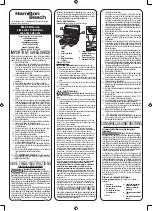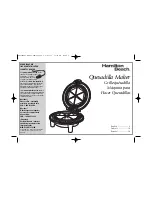
26
with age). The problem with temperature
variations is that the volume of the wine
expands as temperature rises, decreasing
the ullage volume, and then contracts
as temperature falls, increasing the
ullage volume. If the closure is providing
a completely airtight seal then this is
of relatively little consequence. Aim for
consistency, but don’t get paranoid about
minor temperature fl uctuations; wines may
see worse in transit from the winery to the
store. (Even if heat has caused wine to seep
out past the cork, that doesn’t always mean
the wine is ruined. There’s no way to know
until you open it—it could still be superb).
4. TURN OFF THE LIGHTS
Light, especially sunlight, can pose
a potential problem for long-term
storage. The sun’s UV rays can degrade
and prematurely age wine. One of the
reasons why vintners use coloured
glass bottles? They’re like sunglasses
for wine. Light from household bulbs
probably won’t damage the wine itself,
but can fade your labels in the long run.
5. HUMIDITY IS IMPORTANT
BUT NOT CRITICAL
Conventional wisdom says that wines
should be stored at an ideal humidity
level of 70 percent. The theory goes
that dry air will dry out the corks, which
would let air into the bottle and spoil the
wine. Yes, this does happen, but unless
you live in a very dry desert or arctic like
climate, it probably won’t happen to you.
Anywhere between 50 percent and 80
percent humidity is considered safe, and
placing a tray or saucepan of water in
your storage area can improve conditions.
Conversely, extremely damp conditions
can promote mould. This won’t affect a
properly sealed wine, but can damage
the labels. A dehumidifi er can fi x that.
6. FLAT OR STANDING –
STORING OR ON SHOW
Traditionally, bottles have been stored
on their sides in order to keep the liquid
up against the cork, which theoretically
should keep the cork from drying out.
If you’re planning on drinking these
bottles in the near-term, or if the bottles
have alternative closures (screw caps or
synthetic corks), this is not necessary.
7. LIMIT THE MOVEMENT
There are theories that vibration could
damage wine in the long term by speeding
up the chemical reactions in the liquid.
Some serious collectors worry about even
the subtle vibrations caused by electronic
and other appliances, though there’s
little evidence supporting the impacts of
this. Signifi cant vibrations could possibly
disturb the sediment in older wines and
keep them from settling, potentially
making them unpleasantly gritty.
WHERE SHOULD I STORE MY WINE?
If you do not have a cool, not-too-damp
basement or underground garage that can
double as a fridge, you can improvise with
some simple wine racks in a safe place.
Rule out your kitchen or laundry, where
hot temperatures could affect your wines,
and look for a location that is generally less
effected by climate control systems and
not directly in line with sun light pouring in
from a window. Perhaps there is a little-
used closet or other vacant storage area
that could be repurposed for storing wine?
GRCU4731-User Guide GC100 GC166.indd 26
GRCU4731-User Guide GC100 GC166.indd 26
20/9/22 5:14 pm
20/9/22 5:14 pm





































